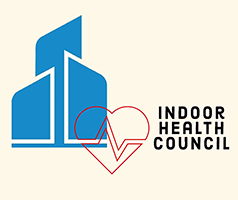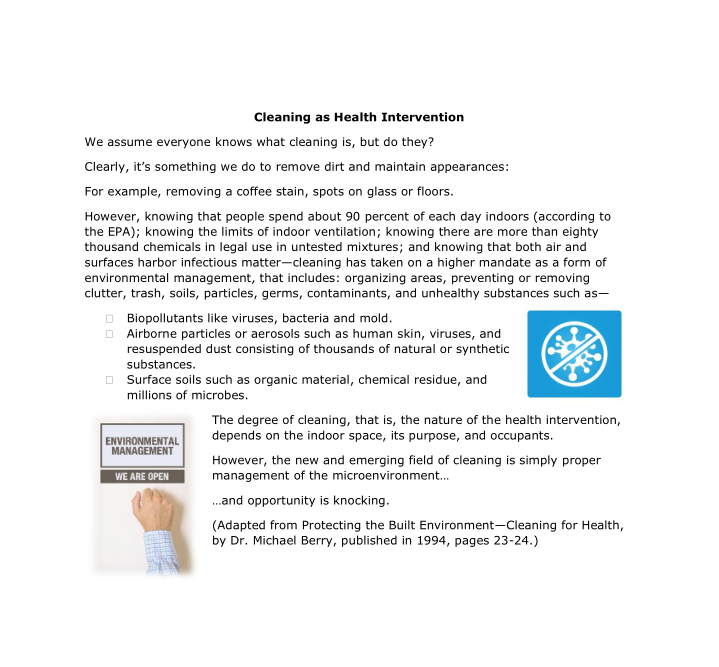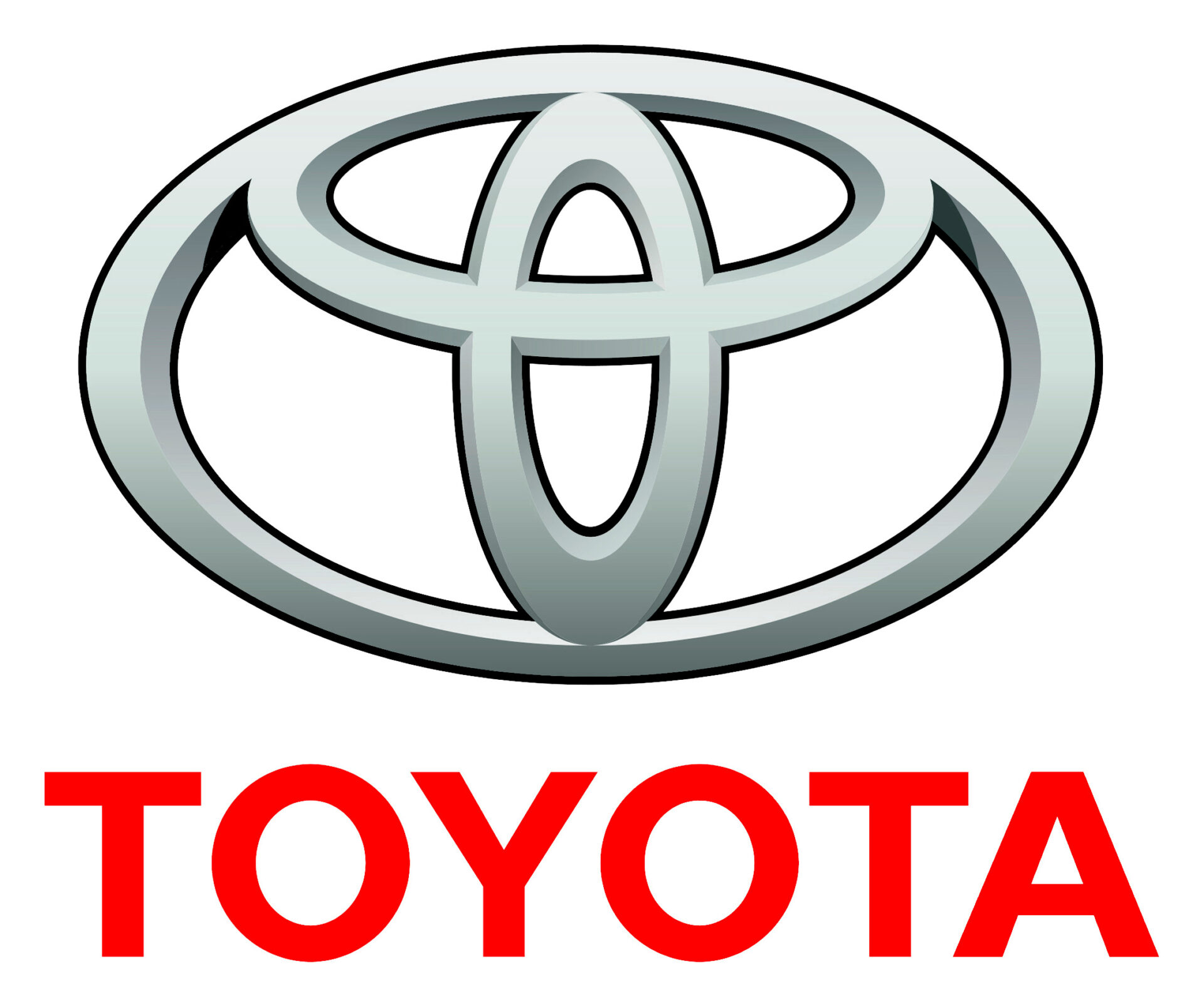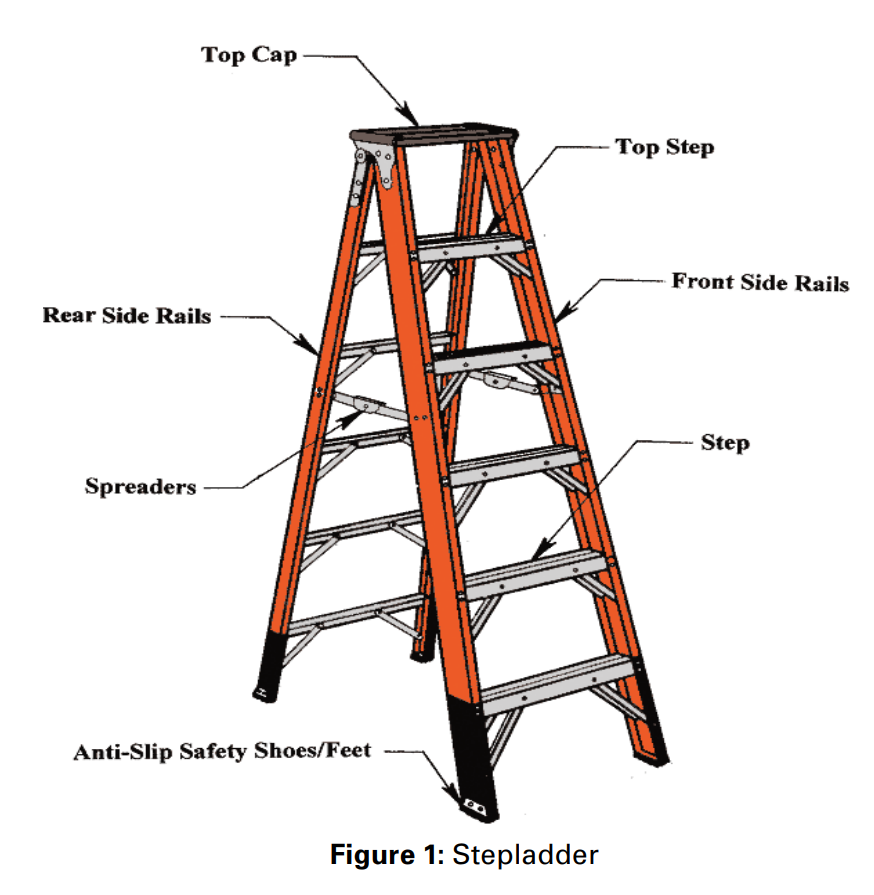Cleaning as Health Intervention
We assume everyone knows what cleaning is, but do they?
Clearly, it’s something we do to remove dirt and maintain appearances:
For example, removing a coffee stain, spots on glass or floors.
However, knowing that people spend about 90 percent of each day indoors (according to the EPA); knowing the limits of indoor ventilation; knowing there are more than eighty thousand chemicals in legal use in untested mixtures; and knowing that both air and surfaces harbor infectious matter—cleaning has taken on a higher mandate as a form of environmental management, that includes: organizing areas, preventing or removing clutter, trash, soils, particles, germs, contaminants, and unhealthy substances such as—
- Biopollutants like viruses, bacteria and mold.
- Airborne particles or aerosols such as human skin, viruses, and resuspended dust consisting of thousands of natural or synthetic substances.
- Surface soils such as organic material, chemical residue, and millions of microbes.
The degree of cleaning, that is, the nature of the health intervention, depends on the indoor space, its purpose, and occupants.
However, the new and emerging field of cleaning is simply proper management of the microenvironment…
…and opportunity is knocking.
(Adapted from Protecting the Built Environment—Cleaning for Health, by Dr. Michael Berry, published in 1994, pages 23-24.)
Review Flash Cards
Cleaning is a health intervention because...
It reduces or removes:
1. Biopollutants like viruses, bacteria and mold.
2. Airborne particles or aerosols such as human skin, viruses, and resuspended dust consisting of thousands of natural or synthetic substances.
3. Surface soils such as organic material, chemical residue, and millions of microbes.
The degree of cleaning, or the nature of the health intervention, depends on...
The type of indoor space, its purpose, and occupants.
Cleaning matters because...
1. People spend about 90 percent of each day indoors.
2. There are more than eighty thousand chemicals in legal use in untested mixtures; so removing chemicals by cleaning and using fewer chemicals when cleaning is vital.
3. Both air and surfaces can harbor infectious matter.





